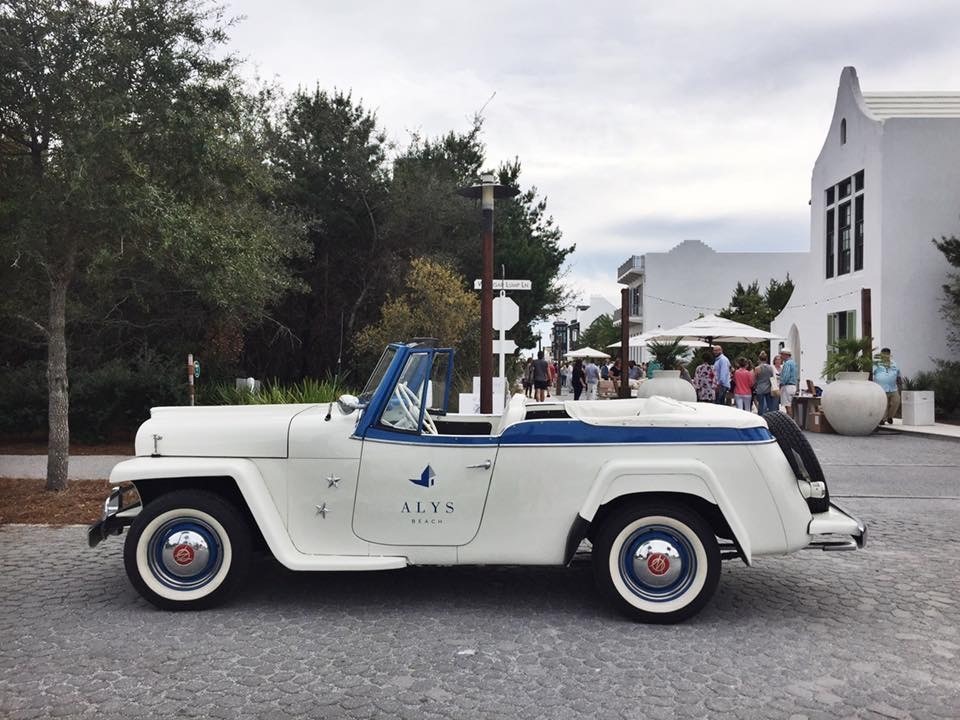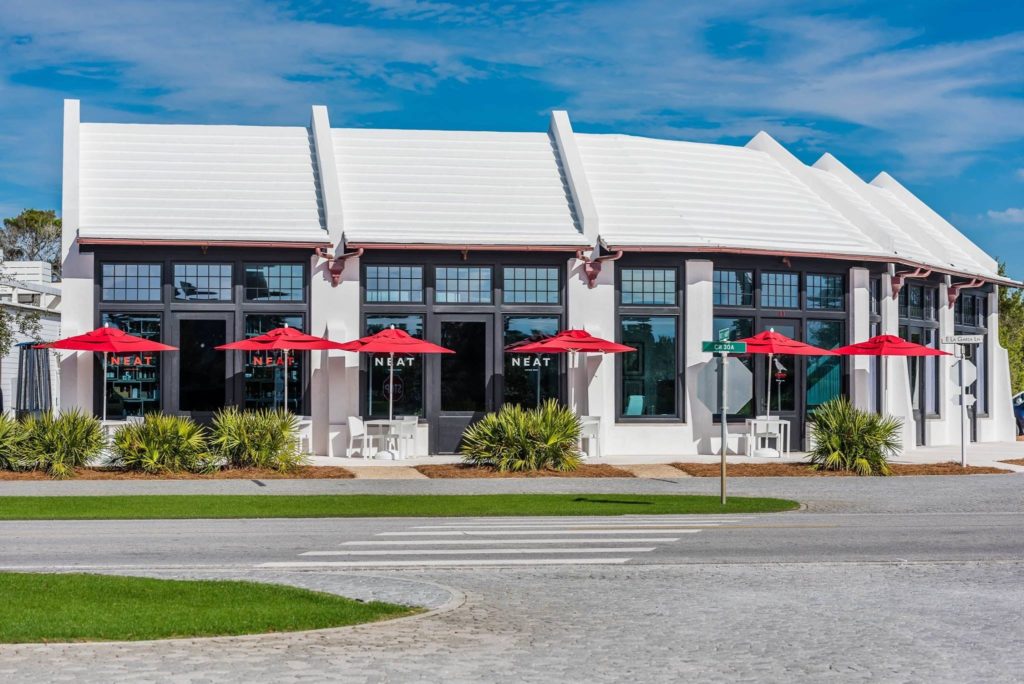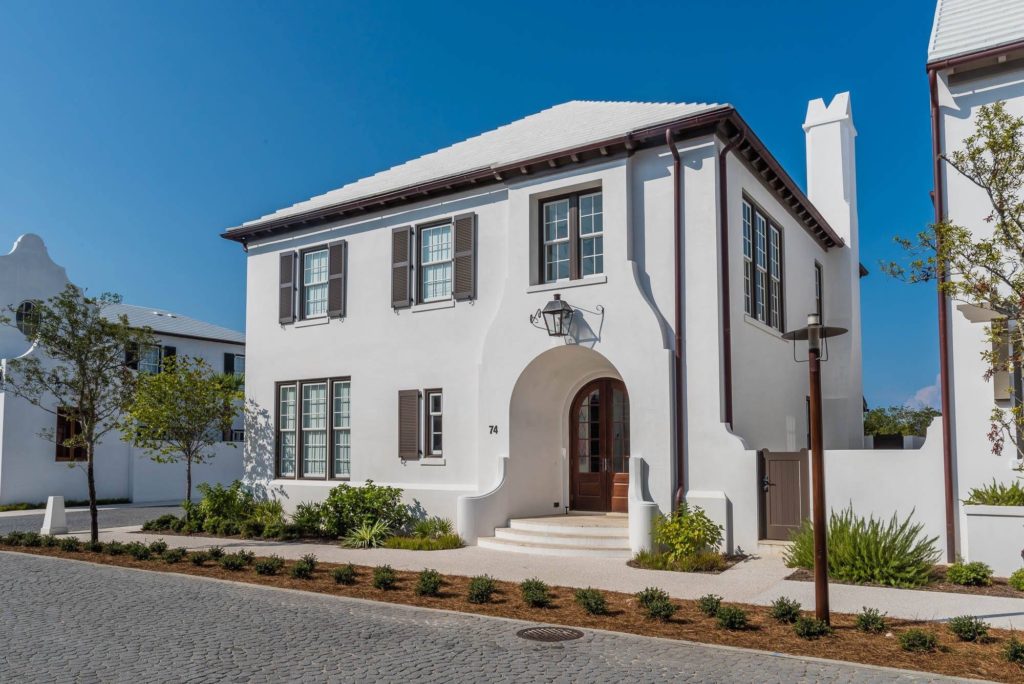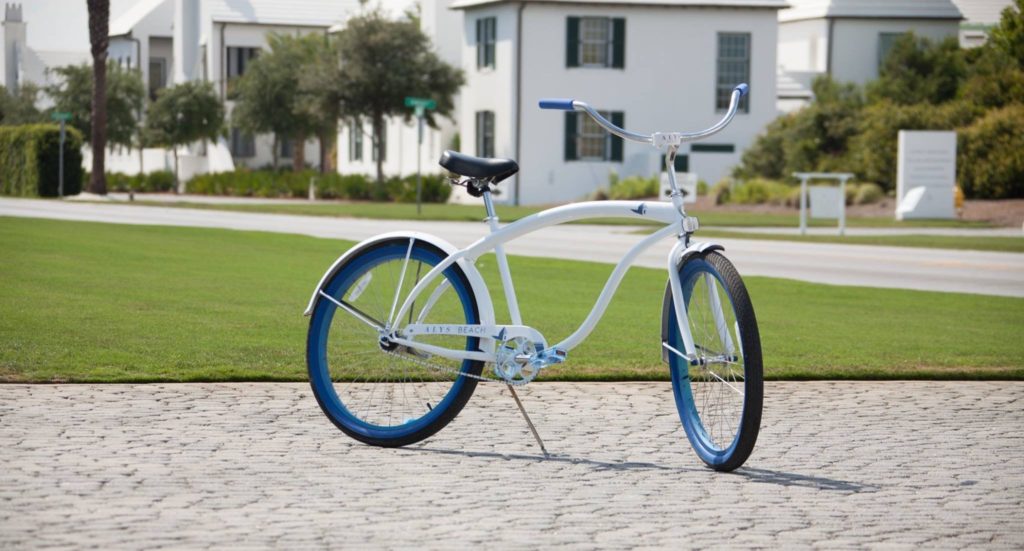Words: Kevin Earley, Director, Commercial Hardscapes, Oldcastle APG a CRH Company
Photos: Belgard Commercial
Alys Beach, an unincorporated planned community in Walton County, Florida, is a family dream that came to fruition in 2004. In the late 1970s, Jim Stephens, his wife, Julie and his father, Elton purchased 158 acres of land on the very secluded Highway 30A in the Florida Panhandle. They named the land Alys Beach for Elton’s wife. While at the time it was just pure scrub oak, sand and blue water, the family had a vision to develop it into a community that was dedicated to architectural excellence and a deep respect for the natural environment.
Designers accomplished this in 2004 by creating a New Urban community that combines Bermudan architecture with courtyard living. For water conservation and to maximize land usage, they created the first true permeable road installation in the panhandle. They chose Belgard’s Belgian Cobble® as the surface of the permeable system, to complement the high-end, old colonial aesthetic of the community.
MarieAnne Khoury-Vogt and Eric Vogt have been the town architects at Alys Beach since 2003. At first, the architects were responsible for setting the tone for the community in keeping with the Stephens family’s goals. They also helped the developer and town planner tighten up the code to maintain that vision. Today, any plans for Alys Beach must go through KVA and an architectural review committee for approval. “The result is a town whose architecture is cohesive, harmonious and beautiful,” says Khoury-Vogt. The whole town is constructed of masonry and white stucco which reflects light—a sustainable feature. There also are white concrete roof tiles and wood accents. “To see it, many people think it looks like a town in Greece or other Mediterranean cities,” says Khoury-Vogt.
KVA designed Alys Beach in a New Urbanist style, which is particularly suited to the waterfront location but posed some challenges. In particular, a New Urbanist plan calls for the utilities to be under the street. “Two things we knew right away were that it rains a lot there, and the utilities would be accessed regularly as the town continued to grow,” explains Khoury-Vogt. “If we were to put in asphalt, pieces would be cut out and replaced every time the utilities needed to be accessed, creating a terrible patchwork. Asphalt also just did not meet the aesthetic or sustainability goals for the town.”
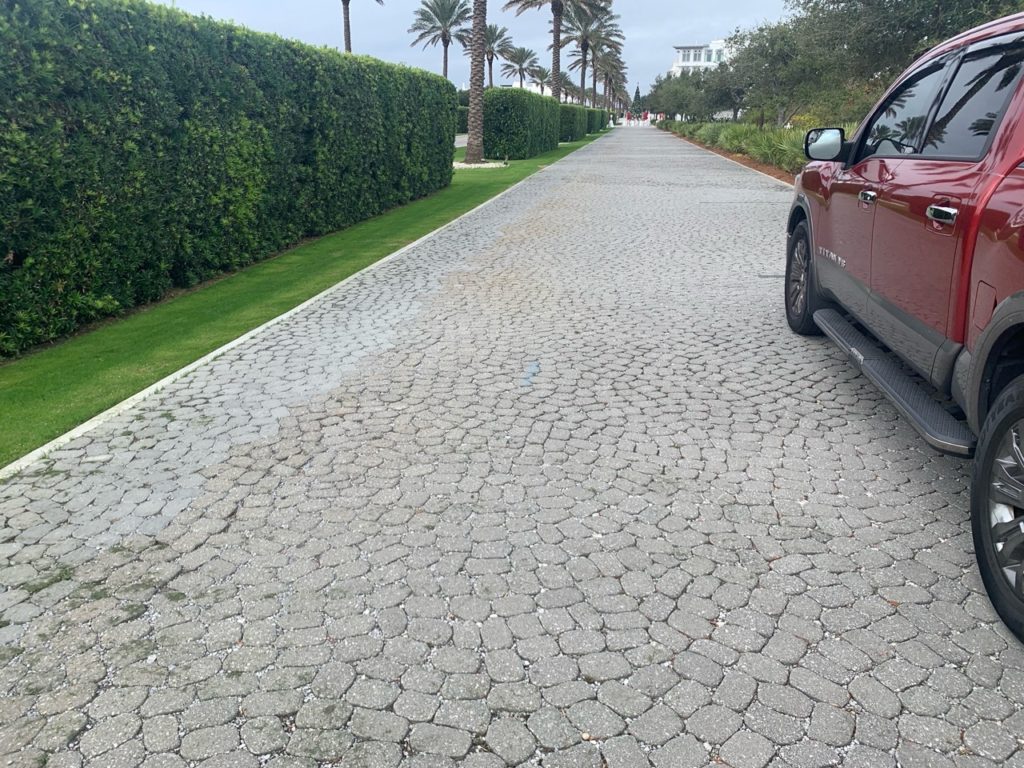
The team came across Belgard’s Belgian Cobble, a dark gray blend color with a granite-like appearance, and decided it perfectly fit with the aesthetic, need to access utilities without leaving evidence of disturbance, and the very important issue of stormwater management.
“You can just pop the pavers out to do what is needed with utilities and then put them back in place and no one every knows they were disturbed,” says Khoury-Vogt. “I can’t tell you how many times this has been done since the road was first laid. The installers work very quickly; they’re amazing.”
In addition to the issue of access to utilities, the roadway was a key focus of design and planning because of its potential impact on the environment. “This was a legacy project for the family members, who were adamant from the beginning that sustainability be one of the key components of the development,” says Jim Martelli, civil engineer and managing director, Innerlight Engineering Corporation. He has worked with Alys Beach since 2002. “They wanted the neighborhood to stand the test of time and be the best it could be for the environment. A significant part of that is stormwater management.”
Martelli looked at the site conditions; being in the Panhandle, the site is low and wet and the ground water is high. What is unique about 30A, and particularly Alys Beach, is that it ranges from 26-35 feet above sea level and is all beachfront property. It shoots up 25 ft. immediately from the Gulf of Mexico to form a tabletop, then undulates through about 158 acres of neighborhood. Additionally, there are approximately 20.5 acres of jurisdictional wetland on the very North side.
“What’s cool about the soils is that they are truly beach sand, a very coarse permeable sand,” says Martelli, noting sustainable development means you have to treat stormwater runoff as close to the source as possible. “It was determined that this great sandy soil would let us utilize what nature provided, so we put the stormwater system under the road and the road is allowed to be part of the system itself. This permeable road concept was the first in the Panhandle when we began using it in 2004, and maybe even in the Southeast, because you need the right soils to pull it off.”
He and Robert Reeder, owner of Stone Scapes, Inc., developed the permeable road system together. The road base was a key element to consider. “Typically in a cobblestone roadway, this would includea crushed concrete aggregate base, but there is no permeable benefit to that. The solution was to use a different base material, washed #57 stone,” says Martelli. The #57 is similar to river rock but there are a lot of angular pieces that lock together, which also is beneficial for a base. Additionally, nearly half of the base is comprised of void space, which provides plenty of space for the water to be stored until it infiltrates into the underlying soil. “Given this, the road base also provides some storage for stormwater runoff.” Martelli calculated that 12” thickness of the #57 stone was suitable to support the anticipated heavy vehicle loads. In addition, Belgard’s Belgian Cobble is 2-3/4” thick helping to achieve the particular vehicle loading requirement.
“We knew if we could come up with a design that would support vehicle loads and infiltrate rainwater we had a multi-purpose pavement system” says Martelli. This system also fit the desired intention of providing easy access to utilities below the road surface.
He and Reeder chose to use a nominally 1-1/2 inch thick bedding layer of angular chip gravel, known as #89 stone, under the Belgian Cobble paver and to fill the joints. “Rainfall is absorbed almost immediately into the ground, getting filtered in the process,” Martelli says.
“Belgian Cobble with washed open-graded aggregate is a great permeable solution because of the width of joints,” says Reeder. “The Belgard cobble allows the development to keep a high-end, old colonial look and we’ve never seen water standing on the roads in the nearly 20 years it’s been there.”
Reeder’s company began installing the permeable road system in 2004, when construction of Alys Beach began. “Our first use of the Belgard Belgian Cobble in Alys Beach was the first time we ever laid these pavers,” says Reeder. “They have to be laid by hand because they are not interlocking and come in seven different sizes.” They continue to add roadway as the community expands and they replace sections following utility work. They have used approximately 900,000 square feet of Belgian Cobble to date.
The roads were laid before the buildings were constructed, so the heavy construction vehicles regularly traveled on the pavers. “It took me by surprise the first day on the job when I walked on them and they moved. I wasn’t sure how they were going to stand up to the traffic they would see,” says Reeder. “I was really impressed when we swept in the 89 stone into the joint openings and the pavers were firmly in place. They have withstood the test of time and heavy traffic and still look good.”
Patrick Hodges of The Patrick Hodges Land Studio couldn’t agree more. With more than four decades of landscape architectural experience, he began working with Alys Beach as a design consultant about six years ago. In addition, Hodges also specified Belgard products for numerous projects including public sector, residential and commercial developments throughout his professional career. This includes the master planning of several of mixed-use projects and resort communities across the Florida panhandle where he continues to provide landscape architectural design services.
“Alys Beach is now the model for new urbanist resort planning,” he explained. “The Belgard permeable pavers are ideal for managing stormwater and have been used successfully to enhance treatment and reduce runoff in several recent projects here in the northwest Florida. Belgard is always eager to collaborate and brainstorm with engineers, architects, and landscape architects on ideas for new colors or site-specific solutions for projects with unique challenges. For example, at Alys Beach, Belgard recommended their Belgian Cobble, to provide a traditional aesthetic that unifies the look and feel of the community, while offering a flexible pavement system that always looks great and helps to quickly drain runoff during typical and major storm events.”
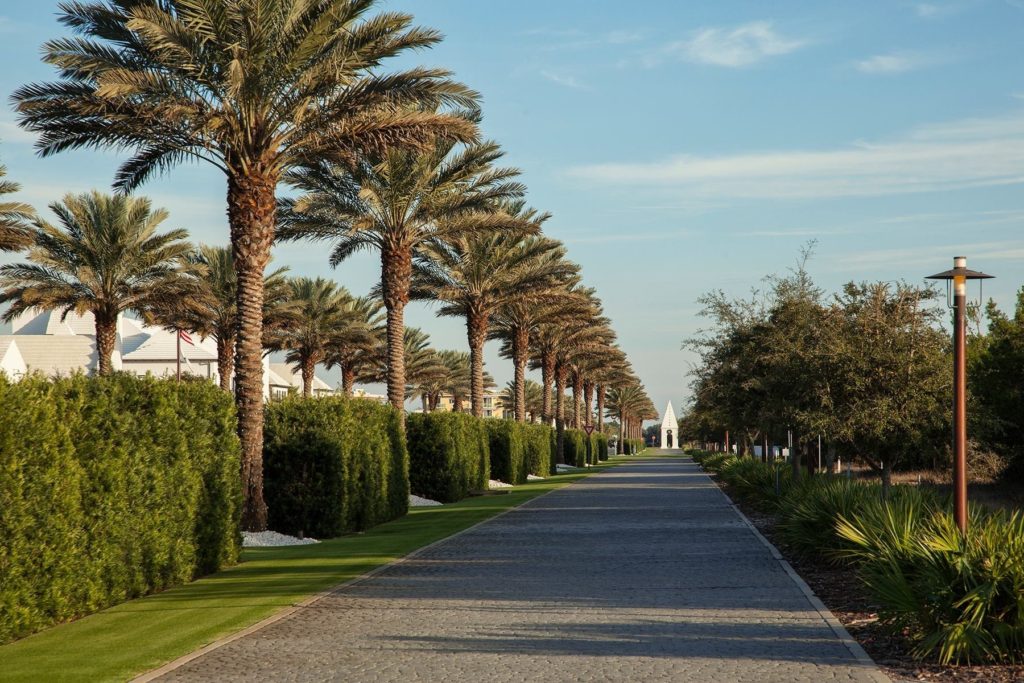
As critical as the roadway was for sustainability, it was also integral to creating a New Urbanist development. This very European, very pedestrian-oriented design includes alleyways behind houses that are used by pedestrians and vehicles alike. The cobblestone’s visible texture provides a traffic calming effect but is still friendly underfoot for pedestrians.
“People regularly bike, walk, skate or push strollers along these alleyways. It all works,” says Khoury-Vogt.
For nearly 20 years, the Belgard’s Belgian Cobble® has helped Alys Beach convey the aesthetic KVA designed for the community while achieving the family’s sustainability goals. As the community continues to grow, so, too, will the permeable road system.
For more information, visit www.belgardcommercial.com
About Belgard®
Belgard, part of Oldcastle APG, offers a complete collection of paver and wall products for plazas, terraces, parking areas, roadways, rooftops and retaining walls. Available in a range of styles, premium Belgard products have been found in the nation’s finest developments and award-winning commercial and retail properties since 1995. Oldcastle APG is part of CRH’s Building Products division. As the largest building materials company in North America, CRH provides a single-source solution for commercial construction projects with a full portfolio that also includes structural masonry, masonry veneers, dry mix products, hardscape jointing sands and sealants, stormwater management systems, concrete infrastructure, architectural glass, lawn & garden products, and composite decking. For more information, visit BelgardCommercial.com or call 1-877-Belgard (235-4273).
